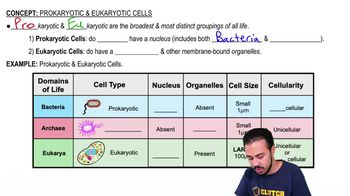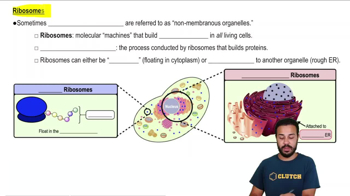Multiple Choice
Which of the following features do prokaryotes and eukaryotes have in common?
2465
views
1
rank
 Verified step by step guidance
Verified step by step guidance



 5:54m
5:54mMaster Prokaryotic & Eukaryotic Cells with a bite sized video explanation from Bruce Bryan
Start learning